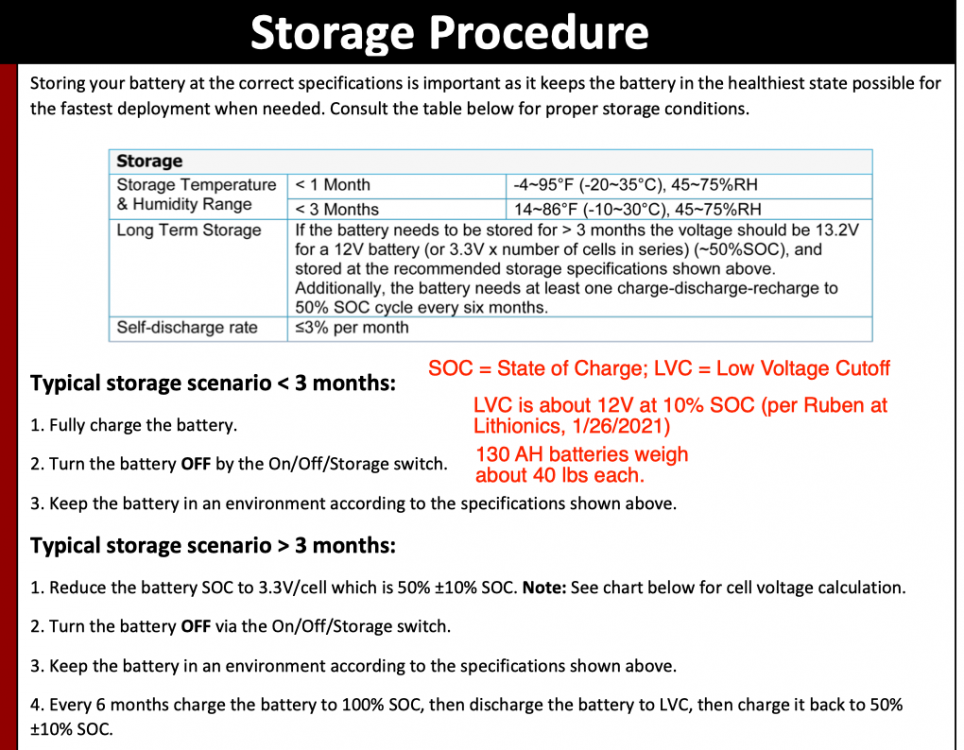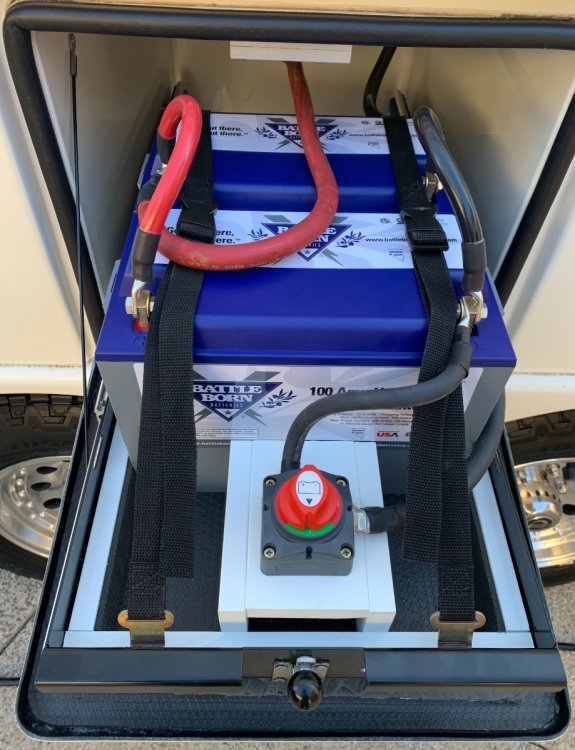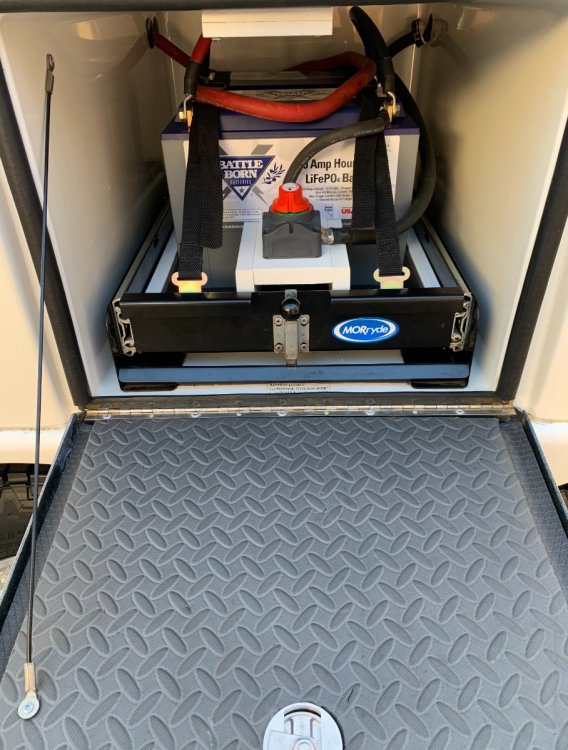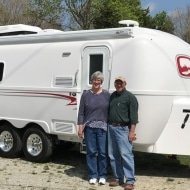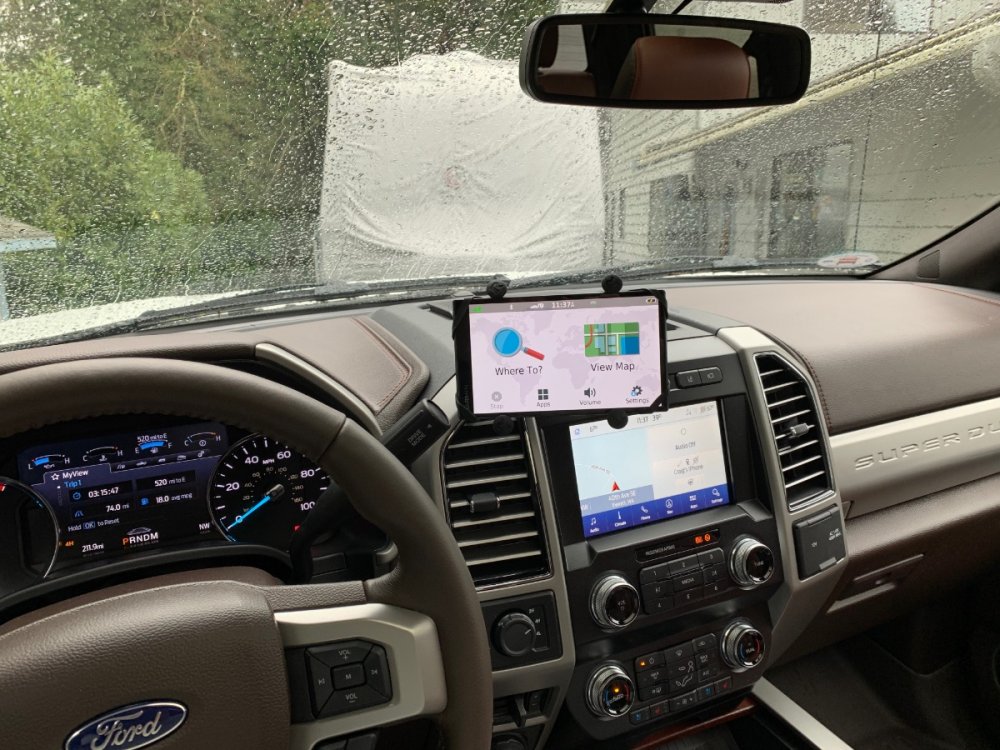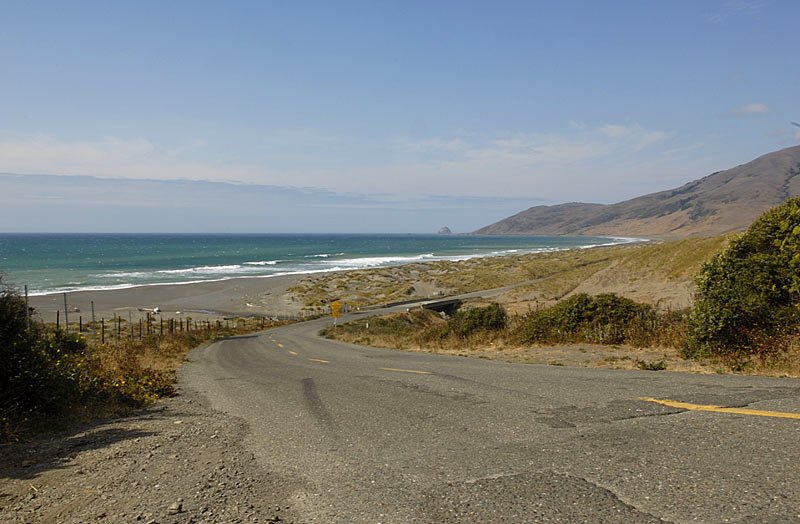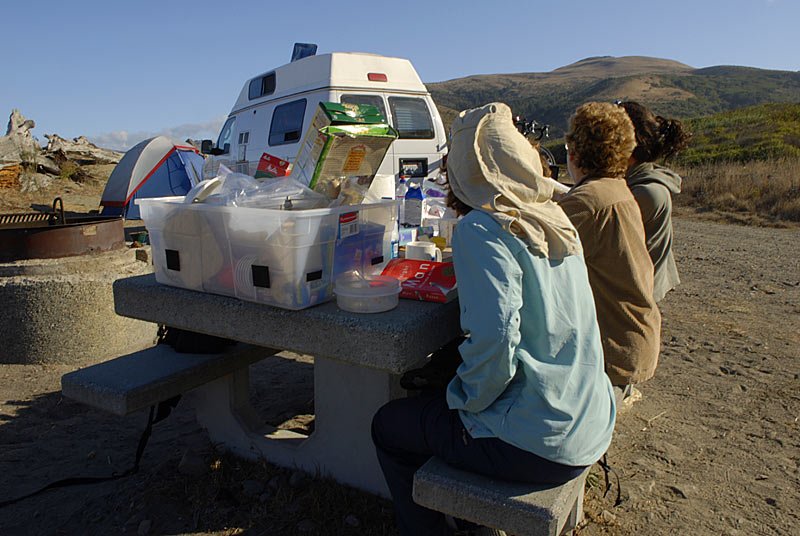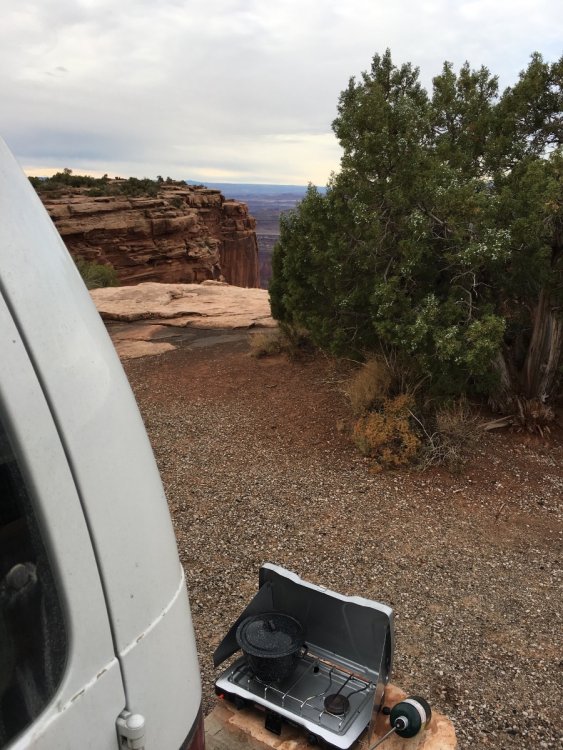Leaderboard
Popular Content
Showing content with the highest reputation on 01/26/2021 in Posts
-
Just ordered the RecPro (Houghton) 13.5k low profile heat pump ductless unit to replace the turbojet engine sounding Dometic Penguin. Unfortunately, the Atwood Air Command units are in very limited supply and most models are ducted. Fortunately, RecPro is now importing U.S. spec (120 volt) Houghton RV air conditioners into the U.S. Houghton is (was) Australian, as was Atwood before being bought by Dometic a few years ago. Specs show 56 dB on high and 47 dB on low. If this pans out, it's a huge improvement over the Dometic. Plus it is a heat pump, so we can avoid using the furnace under most conditions that we would ever be camping in. I will post results once installed. I'm not a big blogger, so don't expect a JD level of detail on the installation. I'm building another airplane and have had my fill of documentation requirements from the FAA.8 points
-
Oliver is now beginning to use three 130 AH batteries (390 AH total) as part of the lithium package. Listed below are the storage requirements from the Lithionics website (https://lithionicsbattery.com/wp-content/uploads/2019/02/Lithionics-Battery-Storage-Procedure.pdf -- my additions are in red text). LifeBlue batteries likely have similar storage requirements. These are storage requirements; the lithionics batteries have a charging range of 32°F to 113°F, and a discharge temperature range of -4°F to 113°F. In other words, when the batteries are in use (e.g., when traveling) they can handle a broader temperature range than when in storage. After much back and forth, I have decided to order the lithium package. Here's why: (1) there is ample charge for several cloudy days at our anticipated daily use (probably between 75 and 100 AH per day) to last for several cloudy days; (2) there is ample battery capacity for occasional, short duration A/C use (perhaps for an hour at 100 AH per hour), although this will likely require supplemental charging from non-solar sources); (3) the lithium package comes with the 3000 W inverter, which allows A/C use at rest stops; (4) I've satisfied myself that I will generally be within the operating and storage temperature ranges; (5) lithium batteries charge more quickly than other battery types from generator or shore power; (6) lithium batteries reduce trailer weight; (7) at least in theory, lithium batteries will last longer; and finally (8) it is done, the system is built, I won't (hopefully) need to upgrade soon, and I can simply use the system. Yes, the lithium batteries do require some attention, especially in exceptionally hot or cold climates (e.g., during extended visits with BackofBeyond's sons). However, here in the arid west where temperatures are typically less than 105°F, and generally greater than 0°F, it should be OK. If it looks like the temperatures will be excessively high or low during times of storage, I can remove the batteries from the trailer and keep them in a conditioned environment: each individual battery weighs about 40 pounds. Another alternative would be to purchase the solar/AGM package and wait for lithium battery prices to fall. However, the solar/AGM packages only comes with the 2000 W inverter. Future upgrades to lithium with the intention of occasional A/C use would require a new, larger inverter. Another reason to perhaps delay going with lithium now is that future lithium battery packages may have greater capacity (e.g., 500 or 600+ AH). However, charging this size of battery (the initial cost of which will likely be expensive) would probably require the use of shore or generator power; there is insufficient charge current available from the existing (340W) rooftop solar system to charge a mostly discharged 600 AH battery pack in a reasonable amount of time. A general rule of thumb might be to have ~1.5 watts of solar panel for every AH of battery capacity (thanks for this, Overland). Thus, 390 AH battery (as is offered in Oliver's current lithium package) is perhaps sufficiently right-sized for the current 340W rooftop solar array (especially if using a 100W or 200W portable panel in conjunction with the 340W rooftop solar). Lacking additional solar, additional charging capacity has to come from the TV, generator, or shore power. If the goal is to reduce or minimize generator use (or shore-power reliance), there's an argument to be made for not oversizing the battery. (Actually, thanks to Overland for helping frame this entire bigger-battery-is-perhaps-not-better perspective.) In summary, I am not in the more tech-savvy group among you (although I feel like I'm confused now at a higher level than when I was before -- that's progress). Nonetheless, I am grateful that Oliver is offering a lithium package, even if the implementation is still evolving. I'm looking forward to giving it a try. quirements6 points
-
Here’s the final installation. Added a battery cut off switch on a spacer block I made out of PVC board. Used some thin foam to cover the door and some thicker foam that fits inside the weatherstripping. Plugged the vent holes with fiberglass plugs from Scubarx. Thanks to Ken Cvacho for the technical expertise and Steve Landrum for the plugs and advice. It was an Oliver community effort. Before: After:5 points
-
Thanks for all the comments. I did hear back from a Bryson Elliot, customer service rep at Equalizer Hitch, the manufacturer of the Zip BAW switch used on our Ollies. While he VERY expertly danced around the "Why" part of my message, he did say two important things: "There is not once in our company history since we have released the zip cable that we have had a problem with the zip shorting and burning the trailer at all." He did not mention internal (inside the hull) wire failure. "There isn't a need to use a fuse with the zip breakaway cable. However we haven't ever had any issues with people using a fuse with the cable. So you can do whichever you'd prefer." He did not say why their wiring diagram shows no fuse, or even a recommended wire gauge, for that matter.... I did look all over the Web for diagrams, I found ONE that showed a fuse in this circuit. No others. So, take his comments for what they is worth, they are still vague. Do as you feel, understanding the possible (remote, but maybe serious) legal implications of modifying this wire. I will open a Service request to see what Oliver says about this. Thanks for your time and participation. John Davies Spokane WA5 points
-
I don't think it's much larger and we should have adequate clearance from the fan. Of course, the opening is the 14 x 14 RV standard. I know the Air Command did not use an internal drain, but if there is a way to connect it on the Houghton- I certainly will. It's great news that there will be some higher quality, quieter options available. I'm sure Oliver is looking at these, as well - at least I hope they are.2 points
-
Since we're never out in super hot weather, I'd think that the 9500 btu would probably work for us, too, even in an Elite II. Oliver has started selling them with 11,000 btu units anyway, so that's really not that far off.2 points
-
2 points
-
Seriously, those 99 cent ikea mats do last. I have one that's five or six years old. Getting thin now, but you can't argue with the price. I've bought them for the Alaska deliveries. Doesn't bother me at all to leave five or six behind. At the price.2 points
-
CELL BOOSTER As Andrew notes, Oliver is no longer using the WeBoost unit; they've gone to the SureCall Fusion2Go 3.0 (https://www.amazon.com/SureCall-Fusion2Go-Vehicle-Booster-Carriers/dp/B079TKG6Q5/ref=sr_1_3?dchild=1&keywords=Fusion2Go+3.0&qid=1611515323&sr=8-3). A 5-G knock-off, perhaps, although it seems like SureCall is one of the larger suppliers for this sort of device. Here are product specs: Uplink Frequency Range (MHz): 698-716 / 776-787 / 824-849 / 1850-1915 / 1710-1755 (G Block Included) Downlink Frequency Range (MHz): 728-746 / 746-757 / 869-894 / 1930-1995 / 2110-2155 (G Block Included) Supported Standards: CDMA, WCDMA, GSM, EDGE, HSPA+, EVDO, LTE and all cellular standards Input/Output Impedance: 50 Ohm Maximum Gain: 50 dB Noise Figure: ≤5 dB VSWR: ≤2.0 Gain Adjustment: 20 dB (Automatic) DC Car Charger: 6-15V Maximum Output Power: 1 Watt EIRP Cable: SC-240 Exterior Antenna Cable Length: 40 ft RF Connectors: FME Male (both ends) Power Consumption: <10W Dimensions: 5.625" x 4" x 1.125" Weight: 1.43 lbs This unit supports multiple frequencies: LTE bands 12, 17, 13, 5, 2, 25, 4 (i.e., more than bands 4 and 13 on older models, which is good). The Internet Resource Center folks (MIMO vs Boosters: Do Cellular Boosters Provide the Best Signal & Data Performance? - YouTube-- thank you, Andrew, for the initial link) seem to have a decent opinion of the SureCall cell booster. However, I'm beginning to think that the hotspot approach (such as the Jetpack sold by Verizon) may offer a better antenna, wifi access to internet for other devices (e.g., laptop and tablet), and a port to plug a MIMO antenna or an even better antenna (such as John Davies is doing). Furthermore, StarLink (https://www.starlink.com) may soon provide an internet alternative where one system serves both home and trailer (100 Mbps download, ~$100/mo), with access in and out of cell areas, negating the need for pulling in weak cell signals. Expensive, yes, but if it replaces DSL or cable at home a well as provide mobility, then it's an intriguing solution. WiFi BOOSTER According to the Internet Resource Center (IRC), the WiFi booster used by Oliver (WiFi Ranger Sky Pro, based on photo in Upgrades -- please correct me if this is not true) is decent, but not very future proofed. My understanding is that the model is being discontinued. There are many alternatives out there at various price points that do different things. Head-spinning, really. The IRC folks are making a full-time occupation out of reviewing the plethora of devices for mobile cell, internet, and wifi uses. Thus, unless some of you make a compelling argument to the contrary, I think I will try the trailer without the factory-installed devices initially, and perhaps look more closely at a Jetpack or similar device in the future.2 points
-
We use both an outside and inside welcome mat. The inside one is good for taking off and storing hiking shoes. Both of them came from Ikea - I only see the inside one on their website now, which still looks fine after four years, despite its $0.99 price tag. https://www.ikea.com/us/en/p/kristrup-door-mat-dark-blue-90392452/2 points
-
I thought it may be useful to some viewing the Campground Forum to check out our web page for Hull 505 - Galway Girl. (Our domain name is 4-Ever-Hitched.com) Hull 505 - Galway Girl - 4-Ever-Hitched Website In our website we feature links to pages that include: 1) Trip to Factory - Describes the trip from WA to Hohenwald 2) Picking up our Trailer - Shows Delivery Day and Camping on the way home, includes maps and names of Campgrounds 3) Around the Northwest - Campground maps, pictures of sites, and links to various parks sites we've visited in the Pacific NW. (Updated Each Trip) 4) Blogs - in this we show repairs, updates we've done to our Elite II. (Updated as they happen.) Finally, there are links to the Amazon Oliver Trailer Outfitters List to post of handy items we and other's have purchased for use with their Olivers. Craig & Rose Short Owners: Hull 505 - Galway Girl Everett, WA1 point
-
1 point
-
This would be an ideal use of a panel mounted fuse holder (probably under the rear dinette seat) visible from the trailer cabin. In particular a fuse holder that lights up when the fuse is blown. Periodic testing would be more important with a fuse installed in the emergency brake power wire.1 point
-
I'll be watching for that...I'd not heard of that issue but I could see how that may happen if the USB charger is using a switcher supply inside. Some good ground shielding on the bottom of the tray and a choke on the ground line could mitigate that if it happens. If I have that issue I'll report back. CS1 point
-
I've had absolutely no issues with either my Ford or my EZE TPMS systems either before the install of the 890 or after.. Bill1 point
-
We can't help you with specific knowledge (we have not even been able to see an Ollie in person yet)...BUT...we are very excited for you and are sure all will be fantastic. Enjoy!!!!! We have been reading your posts - and they have helped us. Thank you and, once again, enjoy!1 point
-
Katanapilot, how does the Recpro Houghton unit compare in size to the Dometic you have installed now? The 13500 recpro has a larger outdoor footprint than the older Duotherm we have on the roof of our 2008. The 9500 btu has a bit smaller footprint, and a much lower profile, which would work great on our roof. 9500 btu is surely more than our Elite I would likely ever require. And priced even better. I like the dehumidifier function, too. I'm wondering if the drain can be attached to Oliver's internal drain, or if yours will have to drain down the outside? I've already seen some good reviews on other sites. Looking forward to yours.1 point
-
1 point
-
Actually here's the outside one. Not quite the same bargain, but still very reasonable - https://www.ikea.com/us/en/p/ydby-door-mat-indoor-outdoor-black-10230562/1 point
-
Perhaps it is a RIVA spec - here is a link: https://www.rvia.org/standards-regulations/laws-and-regulations & State/Cite (rvia.org) Or NHTSA. Perhaps it is a Canadian regulation? Call Oliver - I would believe they know. I don't really care to spend time searching. My 16" tandem 3500 lb axle "farm" utility trailer does not have the break-away - however my former enclosed tandem axle did have the BAS. All my boat trailers did not have BAS. Who knows??? As the BAS is a normally open - closed when activated - you would NOT know of a open fuse until it is to late - in most cases. As has been stated - Oliver must be counted on to understand the requirements, and engineer and build accordingly. I would not recommend altering the circuit - for legal reasons alone. Were one to have an issue - your Oliver takes off on it's own. the brakes do not work as designed, the subsequent wreck causes havoc on something or someone - and a subsequent investigation finds the altered circuit. Hmmm - we have seen this move before. I must say Oliver owners are a cut above - most others just use the RV until they don't - BAS - what BAS. Happy Trails all Keep them little doggies behind you Hooked up, tethered, and BAS working.1 point
-
I followed Topgun2's advice and executed a similar install to enable a swivel arm in our new F350. (EDIT - I also pulled the 20A fuse for the Power Port before doing this work.) 1) I started by removing the dash tray (I used painters tape to protect your dash from scars from the plastic pry tools). 2) Snap off the "speaker cover" it is hard to pull off as it's secured by clips in 4 corners. 3) Remove 2 - 7mm bolts in the front (windshield side) of the tray. 4) Remove the 2 - 7mm bolts on the top of the radio stack front surround. 5) Pull out the radio stack surround, and loosen 2 more 7mm bolts below the radio facia to remove a retaining facia (holds on the side trim stacks.) 6) That allows you to pull straight out on trim to the right of the radio which includes the a/c vent and more importantly access the back of the power point (cigarette lighter). 7) Splice onto the wires from the Cig Lighter port. Feed the wires up into the area above the radio and below the speaker tray. The wiring diagram below was supplied by the Ford BBAS service for 2021 F350. The Cigarette Lighter B+ is the Green/Brown Stripe wire, and Ground is Black with Blue Stripe. Finished install with Garmin all setup. Since the tray removal and wiring was a little tricky I made a quick video showing tray removal and re-install. I considered using the up fitter switch, but realized that there wasn't enough current draw to warrant all that effort and using up a switch. Also, I learned that the "through the firewall" wires ended up making me wish Ford would allow 6" more wire for the "through firewall" feeds. They are so short, you need to completely remove the fuse panel to get access to the bundle of 4 through firewall wires. So I stopped that effort. I wired into the same dash 12v power port circuit as Topgun2. That port dash circuit has a 20Amp fuse, and my devices don't pull more than a couple of amps normally. My backup camera plugs into the 12V power port in the tray, and my Garmin into one of the 2 USB ports. Here's the video showing dash tray removal and reinstall. Dash Tray.mp41 point
-
Lithium can be worth it but I hope people understand what they are getting and how to take care of them. Ruining your lithium batteries after a year or two is way harder to swallow than trashing your AGMs. At the rate Oliver is selling Pro packages I suspect there are going to be more than a few angry customers in a year or two.1 point
-
1 point
-
This is the Mattole Campground, run by the BLM, on the north edge of the Lost Coast in California. It's a primitive campground with one pit toiled and a well with a hand pump IIRC. The sites are sort of dug into the dune barrier that backs up against the beach, which runs for miles and miles - in fact going south is a multi-night backpack route across the road-free Lost Coast. I hiked south about 3.5 miles to the remote Punta Gorda lighthouse while my wife and our friends biked over the quite mountainous road I'd driven to get here. Either way is quite steep and windy and can be closed due to washouts or downed trees so check status if you go. I really LOVED the feeling here. Campendium reports someone getting a 35 foot fifth week into here but all I can report having achieved is an 18 foot van.1 point
-
Here another of those breakfast spots. On this trip I'd camped the night before in a very nice FFS campground way out near one of the points in the Island of the Sky unit of Canyonlands NP. This is a nice pullout with a killer view in Deadhorse Point State Park. The second shot is what I got up bloody early to go photograph - the clouds and morning colors cooperated nicely on this morning (it doesn't always work out like that - kind of like fishing). Both are lovely parks. On another trip there I camped for two nights in a reserved site in Deadhorse Point SP in a campground that had hookups. In both cases all my breakfasts were out and about.1 point
-
Gorgeous! Thanks so much for posting these. For those of us who have never boondocked it's hard to imagine what to expect. I thought it was all just dispersed camping but now I see there are real campsites available at some places just no services. This makes me feel better. Although I do look forward to camping out in nature with the great views like you have shown. Cindy & Charlie1 point
-
1 point
-
The best solution that I've found is a set of comfortable noise cancelling headphones. Mine are comfortable enough to sleep with and they eliminate the AC noise almost entirely. The batteries will easily last the night.1 point
-
Thank you for starting this thread Trainman. The first and only time we used the AC was a couple of nights on our first outing with the Ollie last October. During that trip there was a popping noise which interrupted my sleep a lot. Initially thought it might be the refrigerator cycling, but did not try to track it down until now. After reading this thread I wondered if the source of the popping was the AC. So I started testing the AC first. After starting my AC it popped in less than ten minutes, then continued to pop about every ten minutes for a couple of hours. It also popped in a couple of minutes after shutting down the AC. As others suggested the simplest explanation appeared to be the diffuser was not able to expand or contract smoothly with changes in temperature. Flexing the edges of the diffuser by pressing different areas produced a lot of popping and crackling and if felt like the edge was grabbing the hull. The diffuser is held in place by eight wood screws and two sheet metal screws. I started backing out each screw a little at a time to see if it would change anything. The pops and crackles were reduced with each iteration. I stopped when a sheet of letter paper could easily slide under all edges. The diffuser is forced to follow the contour of the ceiling so the corners were the last to separate. Immediately after backing out the screws I ran the AC for two hours without popping. Although encouraging I ran the AC a few more hours over a couple of days and still no popping. Now I'm looking at ways the screws can be snugged down without forcing the edges against the ceiling, leaving a thin gap all the way around. The largest gaps occur in the front and back at the center. The back gap is the largest at 2.7mm (measured using two dimes) at the center. I don't think these gaps will cause any issues but maybe a soft gasket could be used to seal these areas. Hopefully others will help confirm whether or not these observations help resolve this issue in their trailers. Suggestions for a permanent fix would also be appreciated. This diagram is from Dometic AC 64767 instructions.1 point
-
Oliver eliminated many of the elbows a few years ago, thanks to a recommendation from an owner here on the forum. Now they use bend supports on the tubes wherever they can. There are still a few tight locations on mine where they had to use elbows. I had one of those burst due to vibration on our first trip. It was a similar looking situation to the photo in David's post, where the tube turned down and then connected to another horizontal tube below. In my case, the vertical tube hadn't been cut long enough, so there was tension with the top tube holding the bottom tube off the floor. I think it was bound to break eventually. We really haven't seen much in the way of broken plumbing here on the forum, but of course it's possible. More so if you're someone who likes to go off the beaten path. If you do spend a lot of time on bumpy roads, what I recommend as a precaution is that whenever you're fixing/upgrading/checking out anything in the hull space, take a moment with some zip ties to tie as much wiring and plumbing as you can together or to something solid. Just be careful especially with wiring that you're not creating problems by pulling things too tight.1 point
-
Recent Achievements




